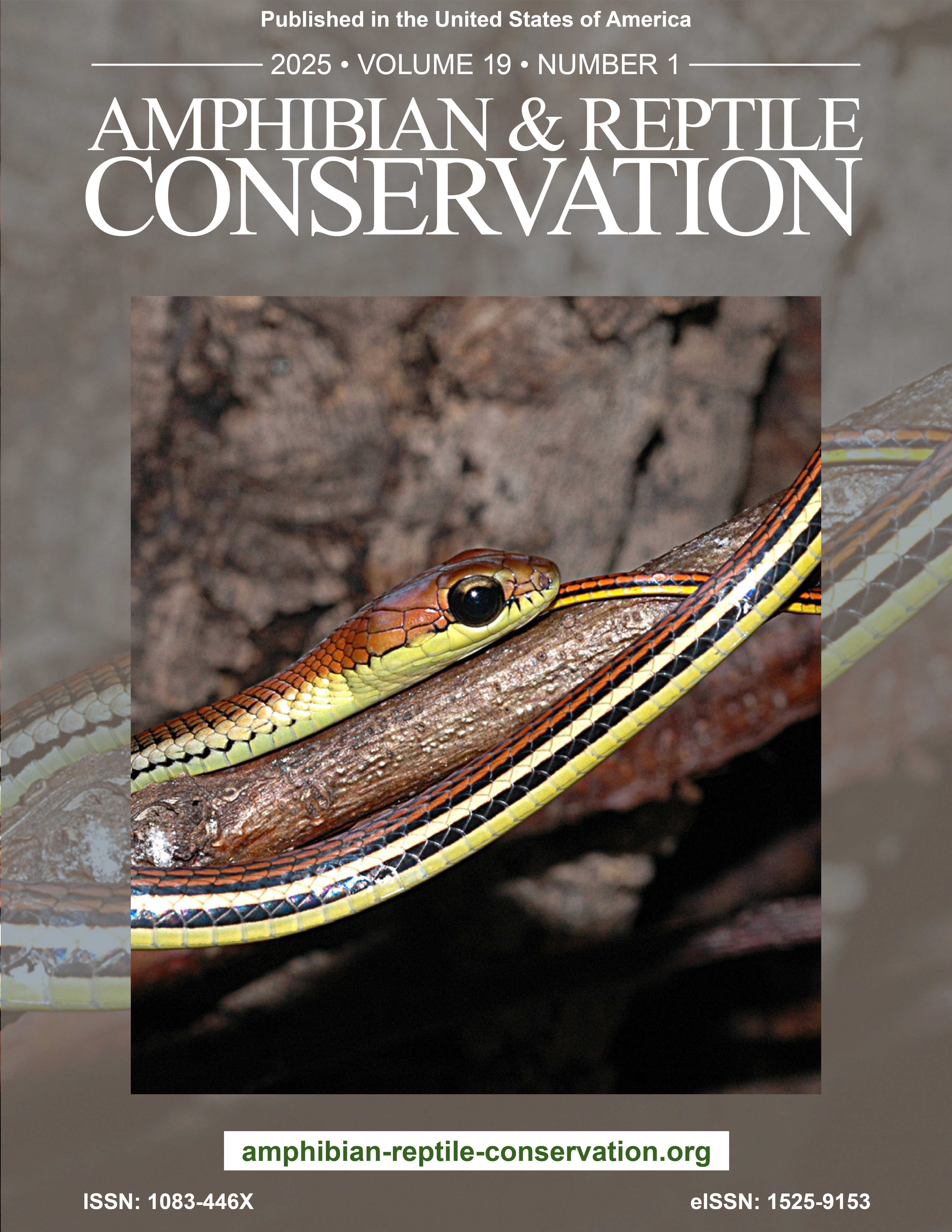Coloration and Crypsis in a Pelagic Sea Snake
Keywords:
Aposematism, bioindicator, camouflage, climate change, diurnal, Hydrophis platurus, Indo-Pacific, marine, nocturnal, predationAbstract
The Yellow-bellied Sea Snake ranges across the tropical Indo-Pacific and is the most widely distributed squamate reptile. The bicolored form, Hydrophis platurus platurus, has a black dorsum and is cryptic while floating among wavelets that produce dark streaks resembling the snake. When flotsam is present on slicks that are its favored foraging sites, the snakes also resemble sticks or debris, while the mottled coloration of the tail resembles the froth that is a common component of flotsam. A second color morph is the all-yellow xanthic subspecies, H. p. xanthos, which has a discrete population restricted to an inner basin of Golfo Dulce. These yellow snakes are conspicuous, and floating specimens are highly visible. Predation pressures from birds, fishes, and marine mammals are potentially great on this species. Whereas the bicolored snakes are diurnal, the highly conspicuous xanthic snakes tend to be nocturnal. In both forms, brilliant yellow coloration is a presumptive aposematic signal that is reinforced by chemical detection of noxious skin. Scarring of snakes is indicative of predatory strikes, but overall predation appears to be less than expected and conceivably mitigated by crypsis and aposematic signals. Understanding features of coloration is important to the conservation of this species, which may serve as an important bioindicator of changes in climate and habitat
